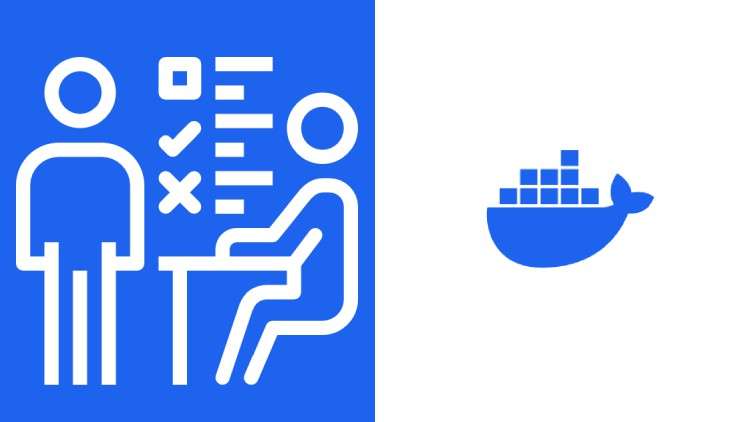
Docker Interview Questions and Answers Preparation Practice Test | Freshers to Experienced | Detailed Explanations
What you will learn
Deep Understanding of Docker and Containerization
Proficiency in Docker Operations and Management
Mastery of Docker Orchestration and Security
Application of Docker in Complex Scenarios
Why take this course?
Note➛ Make sure your 𝐔𝐝𝐞𝐦𝐲 cart has only this course you're going to enroll it now, Remove all other courses from the 𝐔𝐝𝐞𝐦𝐲 cart before Enrolling!
- Docker Hub’s primary function is indeed to store and share Docker images, as mentioned in the sample questions provided. It serves as a central repository where users can upload and access Docker images, which can be used to deploy applications consistently across different environments. Docker Hub also distinguishes between official images (maintained by Docker, Inc.) and user-contributed images, and it offers both public and private repositories.
- Volumes in Docker are primarily used for data persistence beyond the lifecycle of a container. This ensures that any changes or data written to a volume will survive the removal or restarting of the container, which is critical for applications like databases, file storage services, or any long-running service that requires persistent storage.
- The main difference between
CMDandENTRYPOINTin Dockerfile instructions is thatCMDprovides a default command (and optional arguments) when the container runs, and it can be overridden by the user at runtime.ENTRYPOINT, on the other hand, acts as the base executable for the container and cannot be easily overridden. It’s designed to create a more secure base for the application that runs inside the container. - A bridge network isol containers within a virtual LAN (local area network). Containers connected via a bridge can communicate with each other, but they are isolated from both the host system and external networks. B Bridge networking mode offers high performance by sharing the host’s networking namespace. C A bridge network uses the host’s IP address, whereas Docker’s host network mode automates IP address assignment, which is typically associated with a host network mode that does not require manual configuration.
- The purpose of a
.dockerignorefile is to specify patterns to exclude files and directories from being packed into the Docker build context. This helps speed up the build process by excluding unnecessary files that are not required for building the image, which can also help maintain security within the build process.
By taking these practice tests, you’ll be well-prepared to understand and work with Docker, as well as to excel in interviews related to Docker technology. These tests cover a wide range of topics that are commonly asked in DevOps roles where Docker expertise is sought after. Good luck with your studies!
English
language
Found It Free? Share It Fast!